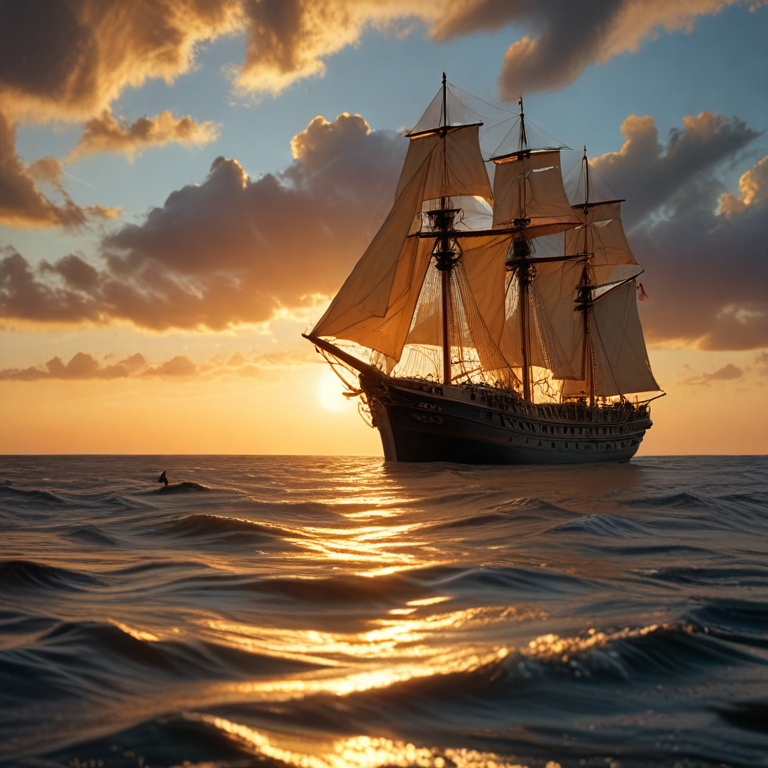Sailing has been a crucial aspect of human history, shaping global trade and exploration in profound ways. From the ancient seafarers who navigated uncharted waters to the modern shipping industry that connects countries across the globe, sailing has played a pivotal role in shaping the world as we know it today. In this blog post, we will explore how sailing has influenced global trade and exploration, providing insights into its historical significance, current trends, and potential future implications.
Historical Context: The Roots of Sailing in Global Trade
Sailing has a long and storied history, dating back to ancient times when early civilizations used boats to trade goods and explore distant lands. The Phoenicians, for example, were renowned for their seafaring skills and established trade routes that spanned the Mediterranean Sea. These early sailors laid the foundation for the global trade networks that would emerge in the centuries to come.
During the Age of Exploration in the 15th and 16th centuries, sailing played a pivotal role in the expansion of empires and the discovery of new lands. Explorers like Christopher Columbus and Ferdinand Magellan undertook daring voyages across the oceans, opening up new trade routes and connecting the continents in ways that had never been done before. The advent of sailing ships like the caravel and the galleon revolutionized long-distance travel and trade, enabling goods to be transported across vast distances with relative ease.
Sailing Today: The Modern Maritime Industry
In the modern era, sailing continues to be a driving force behind global trade and exploration. The maritime industry is a multi-billion dollar sector that facilitates the movement of goods and people around the world. Cargo ships, container vessels, and cruise liners crisscross the oceans, carrying everything from raw materials to consumer goods to millions of passengers each year.
The rise of globalization has further underscored the importance of sailing in global trade. Companies rely on maritime shipping to transport goods between continents, fueling international trade and economic growth. Ports and harbors serve as vital hubs for trade, serving as gateways for goods entering and exiting countries. The development of advanced navigation technologies and communication systems has made sailing safer and more efficient than ever before, enabling ships to travel longer distances in shorter amounts of time.
Impact of Sailing on Global Trade
The impact of sailing on global trade cannot be overstated. Here are some key ways in which sailing has shaped the modern economy:
- Trade Routes: Sailing has created interconnected trade routes that link countries and regions together, enabling the exchange of goods and services on a global scale.
- Economic Growth: The maritime industry supports millions of jobs worldwide and contributes significantly to the global economy.
- Cultural Exchange: Sailing has facilitated cultural exchange and the spread of ideas and traditions across different societies.
- Resource Extraction: Ships are used to transport raw materials such as oil, minerals, and agricultural products from production sites to markets around the world.
Future Implications: The Role of Sailing in a Changing World
As we look to the future, the role of sailing in global trade and exploration is likely to evolve in response to changing economic and environmental conditions. Here are some potential future implications of sailing:
- Green Shipping: With growing concerns about climate change, there is a push for more environmentally friendly shipping practices, such as using renewable energy sources and reducing emissions.
- Technological Advancements: Advances in technology, such as autonomous ships and blockchain-based logistics systems, are poised to revolutionize the maritime industry and make sailing more efficient and cost-effective.
- New Trade Routes: As the Arctic ice melts due to climate change, new shipping routes are opening up in the Arctic region, creating opportunities for faster and more cost-effective trade between Asia, Europe, and North America.
In conclusion, sailing has played a fundamental role in shaping global trade and exploration throughout history. From the ancient mariners who crossed vast oceans in search of new lands to the modern shipping industry that connects countries across the globe, sailing continues to be a driving force behind the global economy. As we look to the future, the role of sailing is poised to evolve in response to changing economic, technological, and environmental conditions, shaping the way we trade and explore the world for generations to come.


